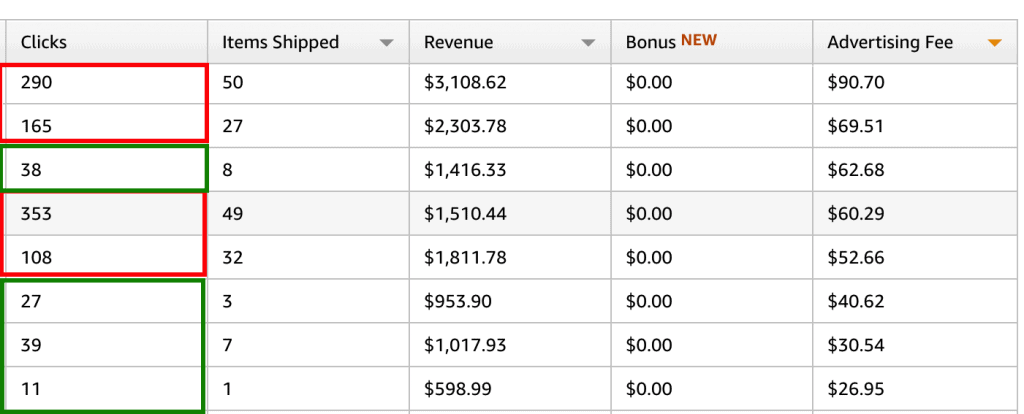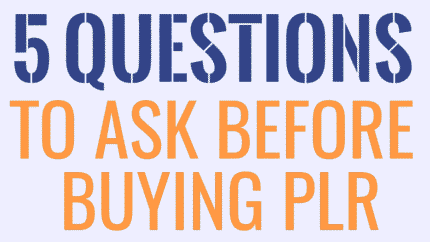
Product reviews are a great way to make affiliate commissions – provided they are genuine reviews, not just a pitch painted up as a review that anyone can see through.
But they have gone out of favour a little recently, with a preference for ‘best of’ lists instead – I’ve seen this myself in many of the niche marketing groups I am in.
Andrew Hansen is a very successful affiliate marketer, and specialises in creating niche sites, ranking them in the search engines, and monetizing them in many different ways (but particularly with physical goods like those sold on Amazon).
I am on his list, and he recently sent an email out with a full analysis of what works best, based on his own experience and backed up with actual figures. It was great stuff, so I decided to post it here.
I’m not 100% sure of the ethics of using someone else’s email, but I’m giving him full credit and linking back to his site so I’m sure he won’t mind 🙂
(I would recommend joining his email list, he doesn’t mail often but when he does it’s good.)
So here’s his email:
Product reviews earn more than "Best of" lists
If you’re reading this email, you know that product reviews can make money. You also know that “best lists” can make money.
“Best lists” are the affiliate content type that really took off in the last 3 years.
They’re now published by outlets big and small, and on products relevant and not relevant. (Why exactly does Business Insider write articles about the Best Toaster Ovens? Because that’s the desperate state of the news industry in 2020… but I digress).
There are even sites that do nothing but “best lists” and earn exceptionally well.
But what happened to poor old product reviews? They’re of course still out there, but they don’t seem to have the same shine they once did.
I’m about to tell you why we think “best lists” are overrated and product reviews are underrated when it comes to earning affiliate revenue.
Take a look at this screenshot of a handful of rows from one of our Amazon accounts. Each row is a tracking ID from a different article. The red squares are around Best Lists, and the green squares are around product reviews:

Here’s how the (literal) Earnings per Click break down:
• Best List: $90/290 = $0.31 EPC
• Best List: $69/165 = $0.41 EPC
• Product Review: $62/38 = $1.63 EPC
• Best List: $60/353 = $0.16 EPC
• Best List: $52/108 = $0.48 EPC
• Product Review: $40/27 = $1.62 EPC
• Product Review: $30/39 = $0.76 EPC
• Product Review: $26/11 = $2.36 EPC
Not only is the EPC higher on product reviews in this sample, it’s much higher.
Now, could this be just because of one particular niche? Maybe, but Sara and I have observed this on multiple sites we own and in multiple sub-niches of those sites.
Could this just be these particular product reviews and list posts? Maybe, but I doubt it. We observe the same across many different list posts and many different product reviews.
But it doesn’t end here.
Product Reviews Cost Less
Best lists are typically longer and hence more expensive to get. A good “best list” nowadays can be anywhere from 3000 to 8000 words long.
They don’t just take longer to write, they take longer to publish too, because of all the different affiliate links and images that need to be added for all the different products.
A great product review can be 2000 words. Sometimes shorter. It has one affiliate link to add, and maybe a couple variations of the product image at most.
Best Lists Tend to Get More Traffic BUT…
Best lists look like better opportunities at the outset because a keyword like “best toaster oven” nearly always has more search volume than “cuisinart toaster oven”.
But comparing one “best list” to one product review keyword is unfair when you consider the difference in likely EPC and the difference in likely word count.
For a 4500 word best list you might be able to get as much traffic with 3 1500 word product reviews. The search volume for 3 product keywords might well equal the volume of one best list in that market, and when you earn more per click on the product reviews, deciding which to publish is a no brainer.
The Caveat: Rankability
If you’ve already fired up your WordPress dashboard ready to publish a new product review I’m glad… but let me offer one quick caveat.
Google will always rank affiliate sites for “best of” keywords, but they won’t always rank product reviews for product name keywords.
These days, product name keywords mostly go to e-commerce sites. Google mostly knows a shopping keyword when they see it, and it’s hard to convince them your product review is what the searcher wants.
“Product name review” keywords, you’re fine. If that has search volume, you’ll rank. But “product name” is a maybe. Sometimes you can rank, sometimes you can’t.
What we do here is use keyword research to focus on the product name keywords where Google is already ranking another affiliate site. That way, you have proof that they’re willing to rank content like yours and you can just write a better version.
But that’s it. Caveat over.
Write More Product Reviews
I hope the message from this email is clear.
They earn more per click.
They’re often lower in competition.
They’re easier to write (or cheaper to have written)
In a way – and having written them for 13 freakin’ years now – I can’t believe this advice still stands: but product reviews are great. They make money. You should publish more of them.
All the best with it,
Andrew Hansen
DigitalWorth.com
I think it’s really interesting, and backs up what I always thought, that writing GOOD product reviews is still a great way to make affiliate commissions – and keep making them long after they are published.
It works for physical products, and also equally well for digital products.
And it reinforces my enthusiasm for Britt Malka’s great ‘Reviews That Convert’ workshop.
Britt Malka has been writing copy and reviews since 1998, so she’s failed a lot and learned a lot over the years.
Now she’s condensed her knowledge into a five day challenge, where you each day will learn a little and do a little.
Over the five days you go through each stage of creating your review. After each lesson, there is ‘homework’ to complete before the next lesson becomes available.
I’ve been through it, and it really is very good. Really clearly set out, with step by step guidance on what exactly you need to do each day (and why)
It’s a great way to learn. And the really clever bit is that – provided you actually do the homework – after five days, you’ll have your first high converting review ready to post.
The thing about reviews is that people look for them – and when they do it nearly always means they are just about to buy.
So if you put a good review up on your blog or on a free site (like Medium), buyers will actively search for it.
And if you follow Britt’s methods, the search engines will pick up on your review and rank it – so buyers will find it.
This is not rocket science, but there IS an art to writing good reviews that both rank and convert. ‘Reviews That Convert’ will allow you to easily master that art.
If you would like to take the challenge, Click Here To Get Full Details

